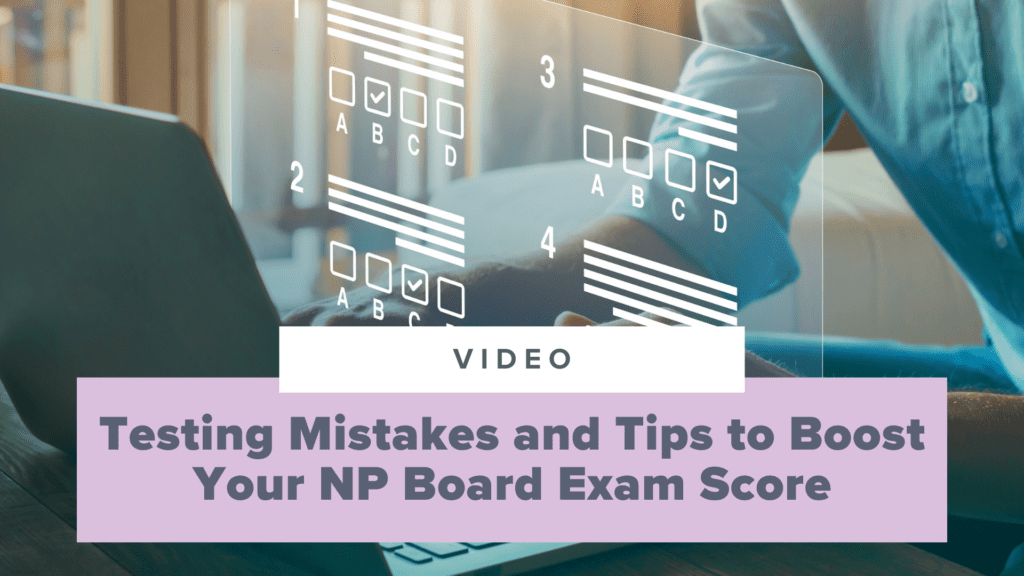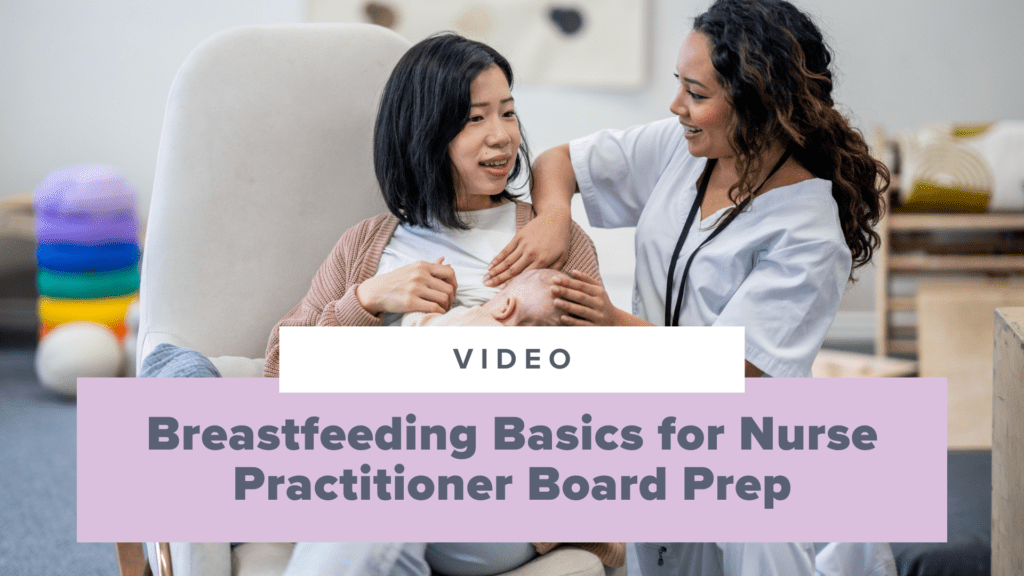Nurse Practitioner Board Prep: Conductive vs. Sensorineural Hearing Loss
- by
- Oct 04, 2023
- Videos

A common concern in primary care is hearing loss. There are two different types of hearing loss: conductive vs sensorineural. If you’re preparing to take the nurse practitioner board exam, you’ll want to study up on what each of these are, how these can be diagnosed, and how those forms of hearing impairment are treated. Not only is this knowledge great to have for your upcoming NP board exam, but also as you prepare to enter practice as a new, real deal NP!
In primary care, you should expect to see this. But if you’re studying and need to brush up on some content, where can you go for a good review of this topic?
This Sarah Michelle NP video, “Nurse Practitioner Board Prep: Conductive vs. Sensorineural Hearing Loss,” is a great resource for you and has all you need to know about these two types of hearing loss! In the video, FNP Caroline Grantham breaks down conductive vs. sensorineural hearing loss, how they are treated, and the tests used to diagnose them in a clear and concise manner, so you’ll be ready for those topics on the NP board exam:
Differences Between Conductive vs. Sensorineural Hearing Loss
Caroline begins with covering what conductive hearing loss is and some of the issues that cause it. Think of these as something you can actually visualize! These are things such as cerumen, cholesteatomas, even fluid. Note: these do not involve the inner ear.
This stands in contrast to sensorineural hearing loss, in which the causes cannot be visualized (i.e., long term exposure to loud noises, ototoxic medications, etc.), and the inner ear (cochlea) has been damaged. It’s an excellent overview of conductive vs. sensorineural hearing loss that will help you get these two types of hearing loss straight.
Diagnosing Hearing Loss
Especially if you’re studying for your NP board exam, you’ll also want to know how conductive and sensorineural forms of hearing loss are diagnosed. Caroline does an excellent job going over the different diagnostic tests that are used to identify conductive vs. sensorineural hearing loss, including a review of the Rinne and Weber tests, how they are conducted, and how they are used to diagnose different cases of hearing loss. Along with some pretty great memory tricks!
Treating Hearing Loss
Lastly, Caroline covers another topic you’ll want to know for the exam: treatments for both conductive and sensorineural forms of hearing loss. She notes that for conductive hearing loss, it will depend on what’s causing it, but solutions can include removal of cerumen, and for permanent conductive hearing loss, hearing aids and surgically implanted devices may be used as well. In contrast, sensorineural hearing loss treatment can also involve hearing aids, but may require a cochlear implant in some cases.
Further Reading
If you’re looking for content on conductive vs. sensorineural hearing loss or struggle with keeping them straight, this video will help you get ready for the NP board exam. It’s just one of many videos in the SMNP series that can help you get ready for the big day but also for future practice. Like and subscribe to our YouTube channel to keep up-to-date on all of the content we have to offer!
Plus, check out these other posts on the SMNP blog to continue with your NP board prep:
Search the Blog
Join our Facebook Group!
Get FREE support and encouragement from thousands of FNP/AGPCNP students and our NP Support team.
Learn More3 Study Hacks to Conquer Your NP Exam!
Download these tips that have helped thousands of students pass their NP board exams.
Download NowInstitutional Partnerships
Are you a faculty member and would like to bring Sarah Michelle’s resources to your school? Email us at nursinggroups@blueprintprep.com for special institutional pricing or click on the link below to learn more.
Learn MoreGroup Discounts
Are you a student and have 10 or more classmates interested in purchasing Sarah Michelle’s courses? Email us at nursinggroups@blueprintprep.com for special pricing.



